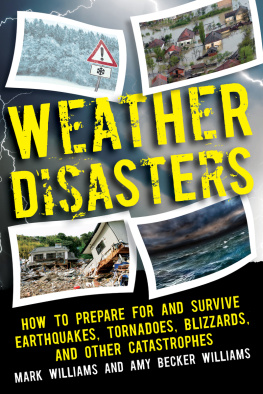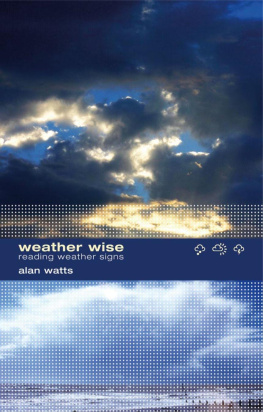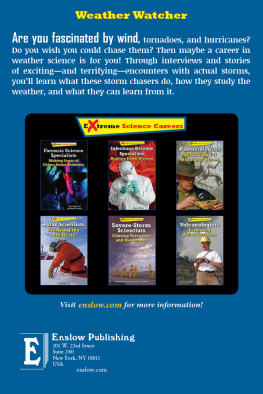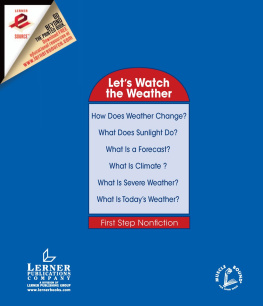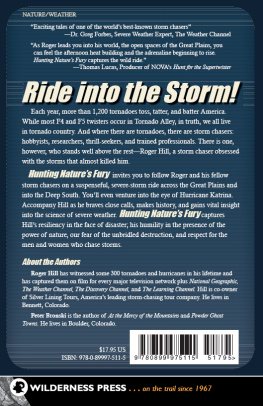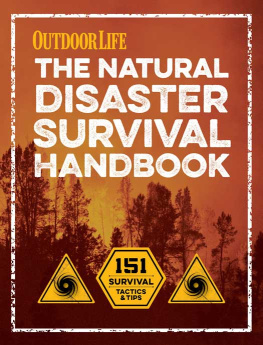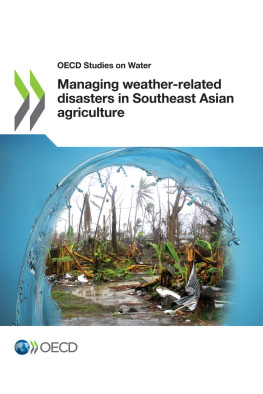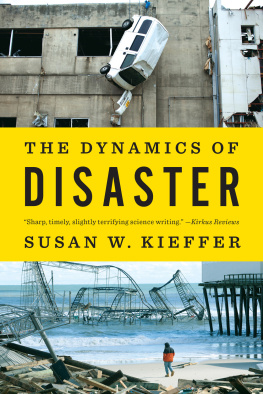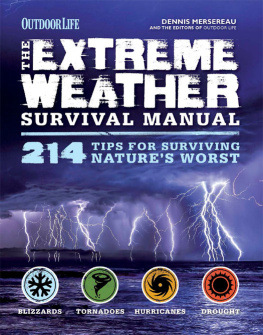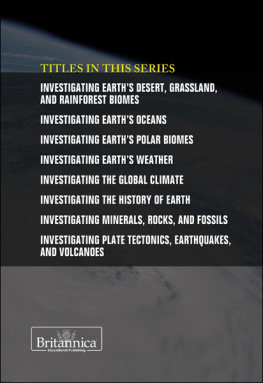
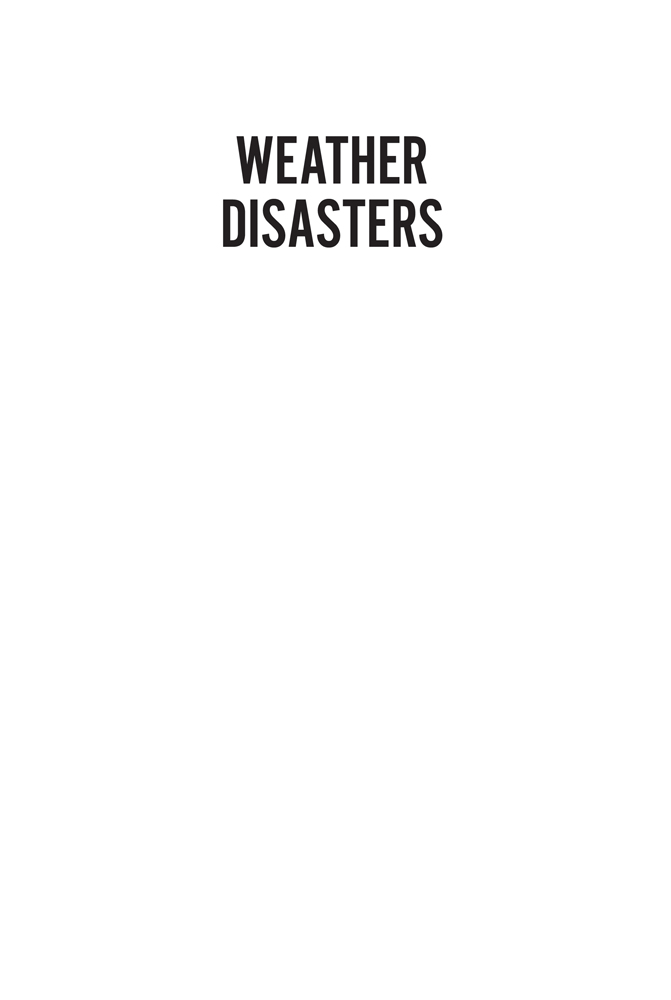

Copyright 2018 by Mark D. Williams and Amy Becker Williams
All rights reserved. No part of this book may be reproduced in any manner without the express written consent of the publisher, except in the case of brief excerpts in critical reviews or articles. All inquiries should be addressed to Skyhorse Publishing, 307 West 36th Street, 11th Floor, New York, NY 10018.
Skyhorse Publishing books may be purchased in bulk at special discounts for sales promotion, corporate gifts, fund-raising, or educational purposes. Special editions can also be created to specifications. For details, contact the Special Sales Department, Skyhorse Publishing, 307 West 36th Street, 11th Floor, New York, NY 10018 or .
Skyhorse and Skyhorse Publishing are registered trademarks of Skyhorse Publishing, Inc., a Delaware corporation.
Visit our website at www.skyhorsepublishing.com.
10 9 8 7 6 5 4 3 2 1
Library of Congress Cataloging-in-Publication Data is available on file.
Cover design by Tom Lau
Print ISBN: 978-1-5107-2862-2
Ebook ISBN: 978-1-5107-2863-9
Printed in China
TABLE OF CONTENTS
INTRODUCTION
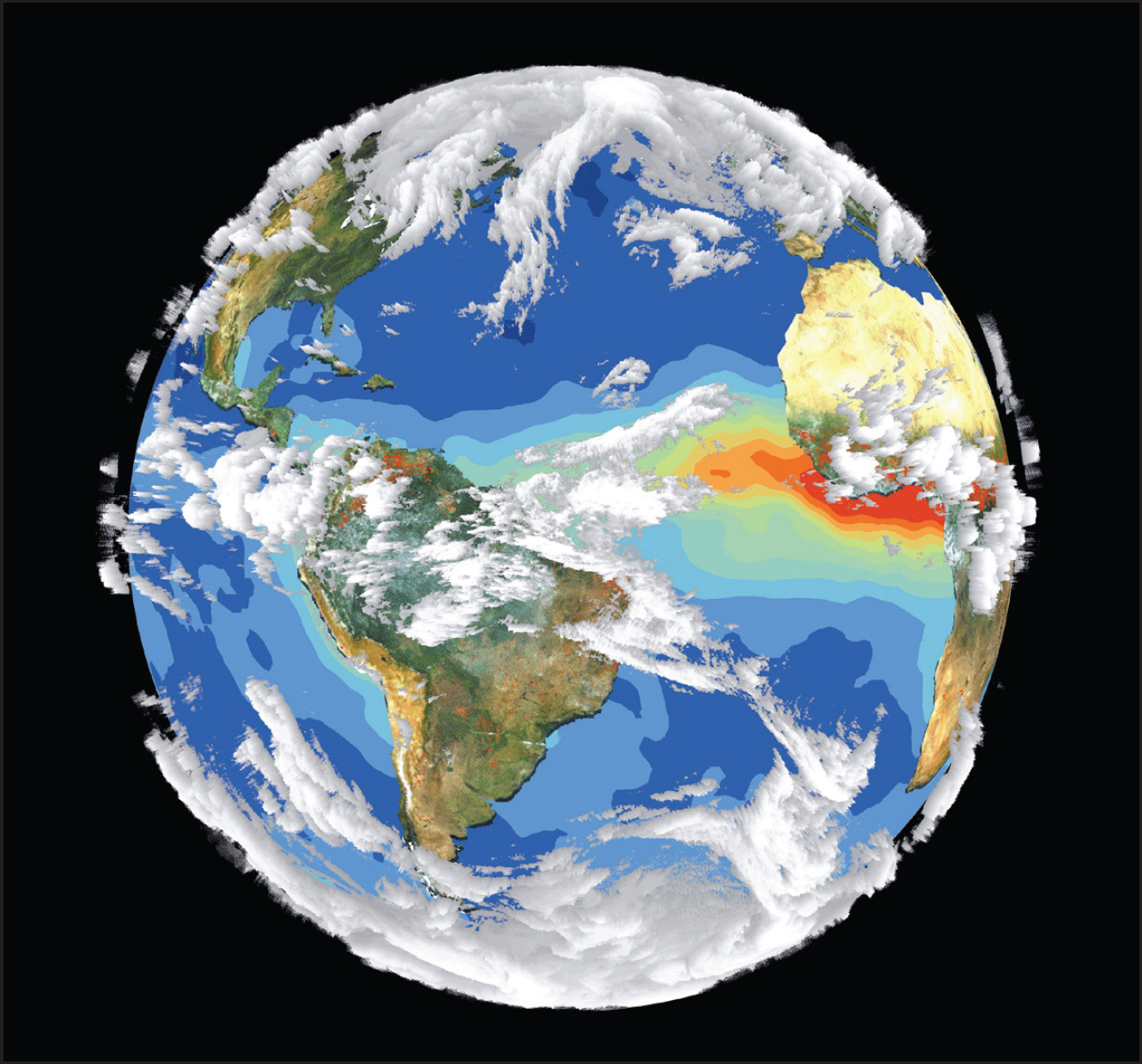
Satellite image of Earths interrelated systems and climate. Credit: NASA
Severe weather events happen every day all over the world. We see the consequences on the evening news: tsunamis kill hundreds of thousands, mudslides ravage entire neighborhoods, floods devastate entire nations, and record hurricanes cause cataclysmic destruction throughout numerous islands. In 2017, America saw one of the most destructive hurricane seasons in its history. California endured one of its worst wildfire seasons ever.
We all are under threat from weather events no matter where we live, but rarely are we properly prepared. Like a New Years Resolution, preparing for possible weather catastrophes sounds like a great idea, but the farther we move from it, the less likely it is we ever actually do it. We hope that this book sits on your table until that moment you decide to break the cycle and start preparing for the weather disaster most likely to affect you.
As we wrote these chapters, Houston was recovering from a thousand-year flood event at the hands of Hurricane Harvey, while Hurricane Irma had grown into a Category 5 and was bearing down on several Caribbean islands and ultimately, the American coast. Currently, weather events seem to be occurring with ever-increasing ferocity and strength. This holds true as Hurricane Irma is the strongest hurricane in the Atlantic basin outside of the Caribbean Sea and Gulf of Mexico in National Hurricane Center records. At the end of 2017, we even watched as a severe weather event wed never heard of before unfolded off the Northeast Coast: the Bomb Cyclone.
These events are terrifying to witness and, in the wake of their power, people often feel helpless. This book, Weather Disasters , seeks to calm some of those fears and informs the reader how to prepare for, survive, and navigate through the aftermath of any major weather-related disaster. Given that earth is producing more and more frequent big weather events, many more once-in-a-century events, we hope this book is instructive and helpful with its timing. Think of all recent destructive disasters: Hurricane Katrina in 2005; the 2010 Haiti earthquake; the 2011 Japanese tsunami (at Fukushima Nuclear Plant); Superstorm Sandy 2012; and the record-setting 2017 seasons for Atlantic hurricanes and American wildfires. This book seems more relevant than ever. In addition to the above disasters, we include earthquakes and volcanoes since they affect weather and are similar in the amount of devastation that they can cause.
The weather disasters that typically cause the most deaths are hurricanes, earthquakes, and floods. All three are large events that can reach so much greater an area or region than can a tornado or landslide or avalanche. Tsunamis and volcano eruptions can also cause huge death tolls but, luckily, they dont happen often. Volcanoes may be the most destructive worldwide because they are climate-changers and species-killers but only erupt once every million years or so.
We should state upfront that we are not weather experts nor do we play ones on television. We simply are fans of weather and seasoned veterans of weather disasters, and so we wanted to put together a survival kit, so to speak, for bad weather. We have been through several kinds of bad weather and are nerdy enough to have put together loose plans and sorry disaster kits. But as severe storms became more common, we wanted to go deeper into survival planning and learn to do more for our family and property. In our own laymans fashion, we researched anything and everything.
We never planned to provide scientific detailed specifics on hurricanes or earthquakes and the likethere are books just for that, experts such as vulcanists, meteorologists, and seismologists who write deeply and intelligently about their subject. We set out to write an every-persons survival book for weather disasters. Our book is meant to introduce the best methods we found from our research on the best ways to prepare, to survive, and to manage the aftermath of the major weather and natural disasters. Were just normal folks who live in normal towns but still face risks from weather disasters. Itd be difficult to live anywhere in America without having to face one or more of these weather disastersand in many places, several.
We have lived in Tornado Alley (Tornado Alley begins in central Texas and goes north through Oklahoma, central Kansas and Nebraska and eastern South Dakota, sometimes including the area east through Iowa, Missouri, Illinois, and Indiana to western Ohio) most of our respective fifty-seven and fifty-one years. We have been through dozens and dozens of tornado warnings, including at least five close calls where the storms came within a mile or less. Weve lived in areas with extreme decade-long drought conditions. We have experienced hurricanes and blizzards. Weve also experienced flash flooding, extreme lightning, wildfires, minor earthquakes, major hailstorms, and one particularly nasty haboob in Odessa, Texas in 1973. Mark visited Hawaii in the 1980s when the eruptions on the Big Island were especially common, devouring houses and destroying neighborhoods. At no point were we properly prepared or educated about any of the events we witnessed. We managed to avoid any human or property damage through no credit to us.
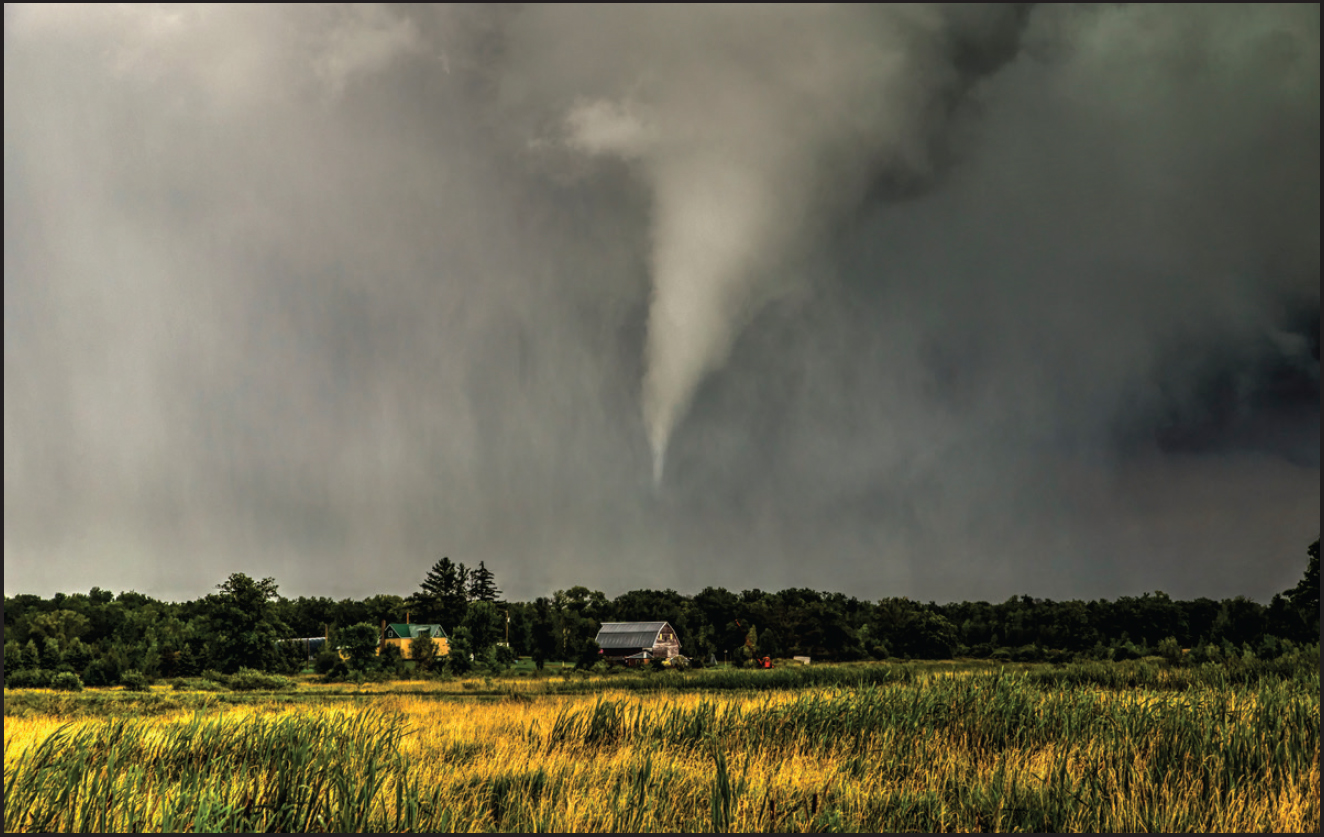
Credit: 2015 NOAA Weather in Focus photo contest, Amanda Hill.
Preparation is easy and is the most important part of weather-event survival. Survival is usually the result of preparation (with some luck) and a lot of remaining calm. The aftermath is often more deadly than the eventflooding, gas, contaminated water, unstable structures, etc. Warning fatigue is a dilemma we all face. We are inundated with so much information. Twenty-four-hour news channels, local news, newspapers, online news, smartphone notifications, and weather apps. Odds are that the hurricane will not hit you, the tornado will miss your house, and the earthquake wont happen this decade, but this book is designed to help when it does. And weather disasters do happen to someone; one time soon it just might be you and your family. Education, preparation, and operation are the three key components of weather event survival. For each weather event you risk, you need the same conscientious action: make a plan and set up supplies. Decide how serious you are about your familys and propertys safety. We are not trying to be cavalier about it. But we do want to be encouraging. A little prep goes a long way toward survival. Once you do it, youll discover that its comforting, useful, rewarding, sometimes fun, and most of all necessary, as it might save you and your familys lives.
Next page
